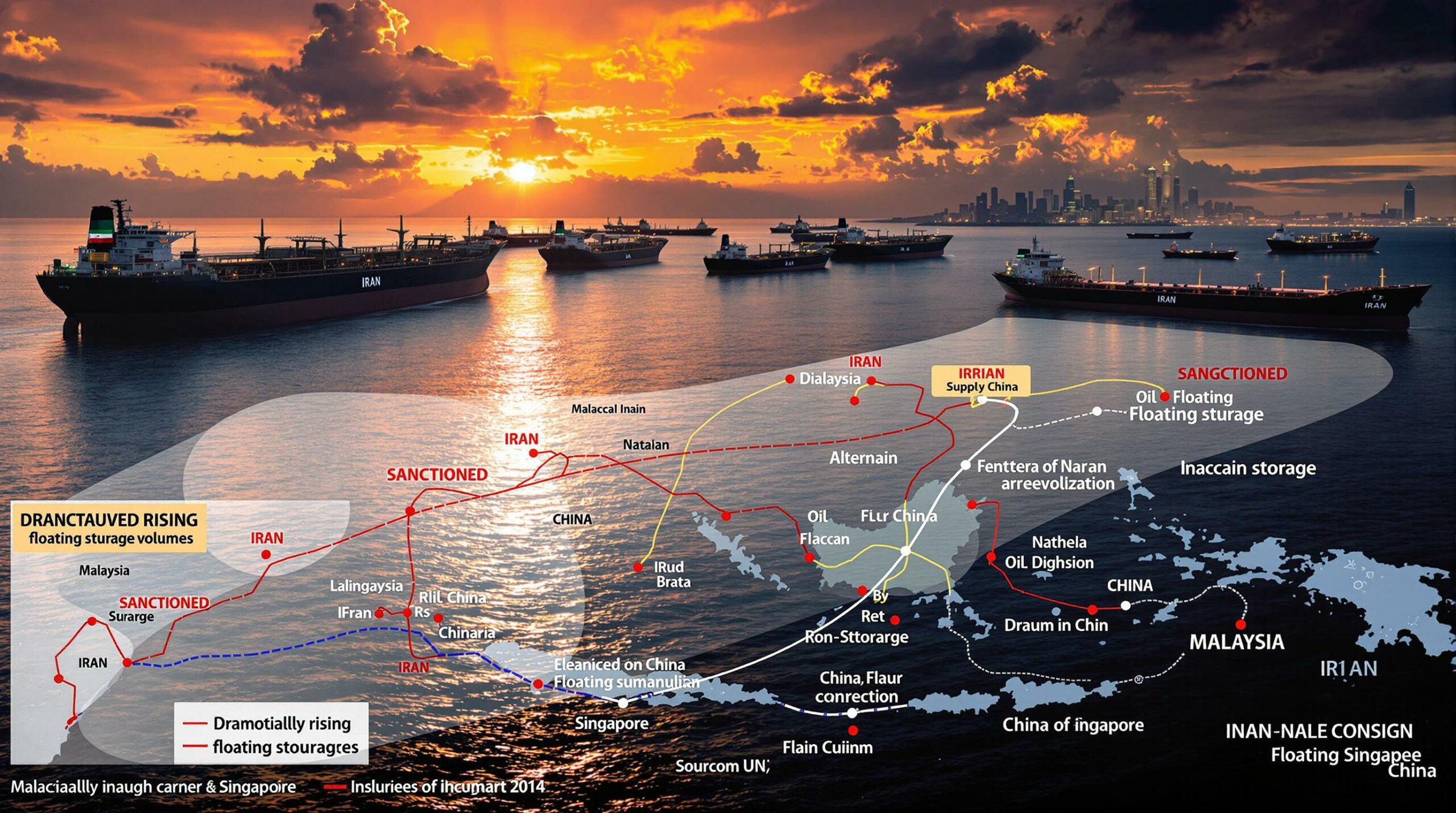How Is Vale Revolutionizing Iron Ore Processing at Carajas?
Vale is transforming the mining industry with a groundbreaking approach to iron ore processing at its massive Carajas complex in Brazil. The company's innovative strategy represents a fundamental shift in how one of the world's essential minerals is extracted and processed, with far-reaching implications for sustainability, operational efficiency, and industry standards.
Vale's Ambitious Water Elimination Strategy for Iron Ore Processing
The Shift to Dry Processing at Carajas
Vale has announced an ambitious plan to completely eliminate water usage in iron ore processing at its Carajas mining complex by 2027. This strategic shift represents a significant advancement in sustainable mining practices, as the company transitions from traditional wet processing methods to innovative dry processing techniques. Currently, 90% of Vale's Northern System operations already utilize dry processing technology, with the company firmly committed to reaching 100% within the next two years.
"By end-2027 they will be 100% dry. The Northern System will be 100% on natural moisture," stated Vale director Gildiney Sales, highlighting the company's commitment to this transformative approach.
The transition is not merely incremental but represents a fundamental reimagining of how iron ore processing can operate in the 21st century, positioning Vale at the forefront of sustainable mining innovation.
Environmental and Operational Benefits
The transition to waterless processing delivers multiple substantial advantages:
- Elimination of tailings generation in the production process
- Removal of the need for new tailings dams, reducing catastrophic failure risks
- Significant reduction in operational costs through simplified infrastructure
- Decreased environmental footprint across the entire operation
- Enhanced operational efficiency through streamlined processing workflows
This approach directly addresses some of mining's most persistent environmental challenges while simultaneously improving Vale's competitive position through operational streamlining.
What Makes Carajas a Global Iron Ore Powerhouse?
Scale and Production Capacity
The Carajas mining complex in Brazil's Para state stands as the world's largest iron ore open-pit mining operation. This massive facility represents the pinnacle of large-scale mineral extraction and processing capability.
In 2024, the Northern System (which includes Carajas) produced an impressive 177.5 million metric tons of iron ore, representing more than half of Vale's total annual output. This extraordinary production scale positions Carajas as a critical asset not just for Vale but for global iron ore market insights, with production volumes that can significantly influence worldwide supply dynamics.
The sheer magnitude of operations allows Vale to implement transformative technologies at a scale that demonstrates commercial viability beyond pilot programs.
Strategic Importance to Vale's Operations
Carajas serves as the cornerstone of Vale's iron ore business, providing:
- High-grade iron ore with superior market value and reduced impurities
- Operational scale that delivers economies of production unmatched in the industry
- A testing ground for innovative mining technologies before broader implementation
- A platform for Vale's sustainability initiatives that can transform industry standards
The strategic significance of Carajas extends beyond mere production numbers. As Vale's flagship operation, initiatives implemented here establish the technological and operational trajectory for the company's global mining footprint.
How Is Vale Implementing Circular Mining Practices?
The Gelado Project: Transforming Waste into Value
Vale is pioneering circular mining through its innovative Gelado Project, which reprocesses tailings stored since 1985 at the Gelado dam to produce high-quality pellet feed. This transformative approach demonstrates how mining companies can extract additional value from historical waste while simultaneously reducing environmental impact.
The Gelado Project represents a paradigm shift in mining philosophy—from a linear "extract-process-waste" model to a circular approach where "waste" becomes a valuable resource. By reprocessing tailings that have accumulated over decades, Vale is essentially mining its own waste, extracting valuable minerals that would otherwise remain unutilized.
This approach not only creates economic value from previously discarded material but also reduces the footprint of legacy tailings storage facilities, addressing one of mining's most persistent environmental challenges.
Production Expansion Timeline
The Gelado Project is set for significant growth with clear production targets:
- Expected to reach approximately 5 million tons of production in 2026
- Projected to increase to 6 million tons by 2027
- Part of Vale's strategic goal to derive 10% of its total annual production from "circular mining" initiatives by 2030
"Vale plans to have 10% of its total annual production coming from what it calls 'circular mining' by 2030," according to the company's strategic roadmap.
This expansion trajectory demonstrates Vale's commitment to scaling circular mining from concept to industrial implementation, potentially transforming how the industry approaches resource utilization and waste management.
What Technologies Enable Waterless Iron Ore Processing?
Natural Moisture Processing Methods
Vale's transition to dry processing relies on utilizing the natural moisture content of iron ore rather than adding water during beneficiation. This approach represents a fundamental rethinking of traditional processing methods and requires:
- Advanced screening and sorting technologies that can operate efficiently without added water
- Density separation techniques optimized for naturally moist material
- Sophisticated ore characterization systems for real-time quality monitoring
- Precision crushing and grinding equipment calibrated for consistent sizing without water
- Dust management solutions that maintain air quality standards
The technological foundation of natural moisture processing leverages the inherent physical properties of the ore itself, reducing the need for artificial intervention through water addition. This approach minimizes environmental impact while maintaining product quality and processing efficiency.
Technological Innovations Supporting Dry Processing
Several key technologies enable efficient waterless processing at Carajas:
| Technology | Function | Benefit |
|---|---|---|
| Sensor-based sorting | Identifies and separates ore based on physical properties | Eliminates need for water-based separation |
| High-precision screening | Classifies material by size with extreme accuracy | Maintains product consistency without water |
| Dust suppression systems | Contains particulate matter during dry processing | Ensures worker safety and environmental compliance |
| Automated quality control | Monitors ore characteristics in real-time | Maintains product specifications without wet sampling |
| Energy-efficient crushing | Reduces particle size with minimal energy consumption | Optimizes processing economics in dry environment |
These technologies work in concert to create an integrated dry processing system that maintains production quality while eliminating water requirements. The successful implementation at Carajas demonstrates that waterless processing is not merely theoretical but commercially viable at industrial scale.
What Are the Industry Implications of Vale's Water Elimination Strategy?
Setting New Sustainability Standards
Vale's commitment to waterless processing establishes new benchmarks for the mining industry with far-reaching implications:
- Creates pressure for competitors to adopt similar water conservation practices
- Demonstrates the commercial viability of sustainable processing methods at scale
- Provides a model for regulatory frameworks in other mining regions
- Showcases how environmental goals can align with operational efficiency
- Establishes new metrics for measuring mining sustainability performance
By proving that waterless processing is not only environmentally preferable but economically viable, Vale is fundamentally altering industry expectations around resource usage and sustainability standards.
Market and Competitive Advantages
The transition to dry processing offers Vale several competitive edges in the global iron ore market:
- Reduced operational costs in the long term through elimination of water infrastructure
- Enhanced ESG (Environmental, Social, Governance) profile for investors increasingly focused on sustainability metrics
- Decreased regulatory compliance risks as water management regulations tighten globally
- Improved community relations through reduced environmental impact and resource competition
- Potential premium pricing for sustainably produced iron ore as markets increasingly differentiate products based on environmental footprint
"Ending water use would eliminate tailings generation in the production process, remove the need for new tailings dams, and reduce costs," Vale confirmed in its sustainability report.
These advantages position Vale favorably in an industry facing increasing scrutiny over environmental impacts and resource utilization. The company's leadership in water elimination creates both operational and market differentiation that competitors may struggle to match in the near term.
How Does Vale's Strategy Address Mining's Water Crisis?
Water Conservation in Water-Stressed Regions
Mining operations globally face increasing water scarcity challenges, with climate change exacerbating competition for this essential resource. Vale's approach provides a comprehensive response:
- Reduces pressure on local water resources in the ecologically sensitive Amazon region
- Eliminates competition with communities and ecosystems for increasingly scarce water
- Provides a model for water conservation in other water-stressed mining regions worldwide
- Demonstrates adaptation strategies for climate change impacts on water availability
- Showcases technological solutions to one of mining's most persistent sustainability challenges
The elimination of water from processing operations represents a fundamental solution rather than an incremental improvement—addressing the root cause of water impact rather than merely reducing usage.
Quantifying Water Savings
The elimination of water in processing delivers substantial conservation benefits with far-reaching implications:
- Potential savings of billions of gallons of water annually across the Carajas complex
- Reduced water treatment requirements and associated chemical and energy costs
- Decreased risk of water contamination incidents affecting surrounding ecosystems
- Lower overall water footprint across the mining value chain
- Preservation of water resources for communities and natural systems
These water savings represent not merely an operational improvement but a significant contribution to regional water security in an era of increasing climate uncertainty.
What Other Sustainability Initiatives Is Vale Implementing?
Technological Modernization
Beyond water conservation, Vale is embracing other advanced technologies to enhance sustainability across its operations:
- Deployment of self-driving trucks at Carajas to optimize fuel efficiency and reduce emissions
- Implementation of renewable mining solutions to power mining operations
- Development of AI-powered operational optimization systems for resource efficiency
- Integration of real-time environmental monitoring technologies for proactive management
- Adoption of predictive maintenance systems to extend equipment lifespan
These technological innovations work synergistically with Vale's water elimination strategy, creating a comprehensive approach to sustainable mining that addresses multiple environmental dimensions simultaneously.
Carbon Reduction Efforts
Vale's sustainability strategy extends to carbon management with initiatives targeting climate impact:
- Electrification of mining equipment and transportation to reduce direct emissions
- Energy efficiency improvements across operations to lower overall consumption
- Development of green hydrogen applications for processing and transportation
- Implementation of carbon capture and utilization technologies at key emission points
- Reforestation and ecosystem restoration projects to offset remaining emissions
Together, these initiatives demonstrate Vale's comprehensive approach to sustainability, addressing not just water usage but the full spectrum of mining's environmental footprint. Additionally, the company is seeing tangible decarbonisation benefits that extend beyond environmental improvements to economic advantages.
FAQ About Vale's Iron Ore Processing Transformation
What is dry processing in iron ore mining?
Dry processing refers to methods that extract and concentrate iron ore without using water. These techniques rely on the natural moisture content of the ore and employ mechanical separation processes like crushing, grinding, screening, and various physical sorting methods to separate valuable minerals from waste material.
Unlike traditional wet processing, which uses large volumes of water to create slurries for separation, dry processing leverages differences in density, magnetic properties, and physical characteristics to achieve separation without added water.
Why is eliminating water use in mining significant?
Water elimination in mining processes is significant because it:
- Reduces environmental impact on local water resources and aquatic ecosystems
- Eliminates tailings dam risks, including catastrophic failure potential
- Conserves water resources in regions facing increasing scarcity
- Lowers operational costs associated with water infrastructure and management
- Decreases the potential for water contamination affecting surrounding communities
- Reduces energy consumption associated with water pumping and processing
- Minimizes waste management complexities and long-term liabilities
This approach is particularly valuable in regions facing water scarcity or where water resources are ecologically sensitive, such as the Amazon region where Carajas operates.
How does dry processing compare to traditional wet processing methods?
Dry processing and wet processing differ in several key aspects:
| Aspect | Dry Processing | Wet Processing |
|---|---|---|
| Water Use | Minimal (natural moisture only) | High (requires significant water input) |
| Infrastructure | Less complex (no water systems) | More complex (pumps, pipelines, dams) |
| Tailings | Dry, stackable waste | Wet slurry requiring containment |
| Energy Use | Higher for mechanical separation | Lower for processing, higher for water management |
| Product Quality | Can be maintained with proper technology | Traditionally provides good quality control |
| Environmental Risk | Lower (no dam failure risk) | Higher (water contamination, dam failures) |
| Operational Complexity | Moderate (dust management challenges) | High (water management requirements) |
| Capital Cost | Initially higher for advanced technology | Higher long-term costs for water infrastructure |
Dry processing typically requires less infrastructure, eliminates tailings dams, reduces water consumption to near-zero, and often has lower operational costs. However, it may require more energy for crushing and grinding, can generate more dust requiring mitigation measures, and may have limitations for processing certain ore types with complex mineralogy.
What challenges might Vale face in transitioning to 100% dry processing?
Potential challenges include:
- Dust management – Containing and controlling dust generated during dry processing
- Product quality consistency – Ensuring uniform quality across varying ore types without water-based control mechanisms
- Energy consumption – Addressing potentially higher energy requirements for mechanical processing
- Processing limitations – Overcoming difficulties with processing very fine particles without water
- Capital investment – Managing the substantial investment required for new equipment and technology
- Operational transition – Maintaining production during the conversion from wet to dry systems
- Technical expertise – Developing workforce capabilities with the specialized skills needed for dry processing
- Climate adaptation – Ensuring system resilience during extreme weather events in the Amazon region
Addressing these challenges requires not only technological solutions but also operational innovation and workforce development to ensure successful implementation.
Key Takeaways on Vale's Iron Ore Processing Revolution
| Aspect | Current Status | 2027 Target | Impact |
|---|---|---|---|
| Water Usage in Northern System | 90% dry processing | 100% dry processing | Complete elimination of water in beneficiation |
| Gelado Project Production | Building capacity | 6 million tons annually | Value creation from historical waste |
| Circular Mining Contribution | Developing programs | 10% of total production by 2030 | Significant reduction in new resource extraction |
| Tailings Dam Requirements | Reduced need | No new dams for processing | Enhanced safety and reduced environmental risk |
| Operational Cost Structure | Traditional mixed model | Lower water-related costs | Improved cost competitiveness in global markets |
Vale's transformation of iron ore processing at Carajas represents not merely an operational improvement but a fundamental reimagining of how mining can operate in an era of increasing environmental scrutiny and resource constraints. By eliminating water from processing, implementing circular mining approaches, and embracing technological innovation, Vale is establishing new standards for sustainable mining practices that may well define the industry's future trajectory. Furthermore, as Australian iron ore leadership continues to evolve, Vale's innovations may influence practices globally.
Further Exploration:
Readers interested in learning more about sustainable iron ore processing technologies can explore related educational content available through Vale's pilot plant for sustainable mining, which offers additional perspectives on innovations in mining sustainability.
Looking to Invest in the Next Major Mineral Discovery?
Discovery Alert's proprietary Discovery IQ model instantly notifies investors of significant ASX mineral discoveries, transforming complex data into actionable insights for both short-term traders and long-term investors. Explore why historic discoveries can generate substantial returns by visiting Discovery Alert's dedicated discoveries page and begin your 30-day free trial today to position yourself ahead of the market.




